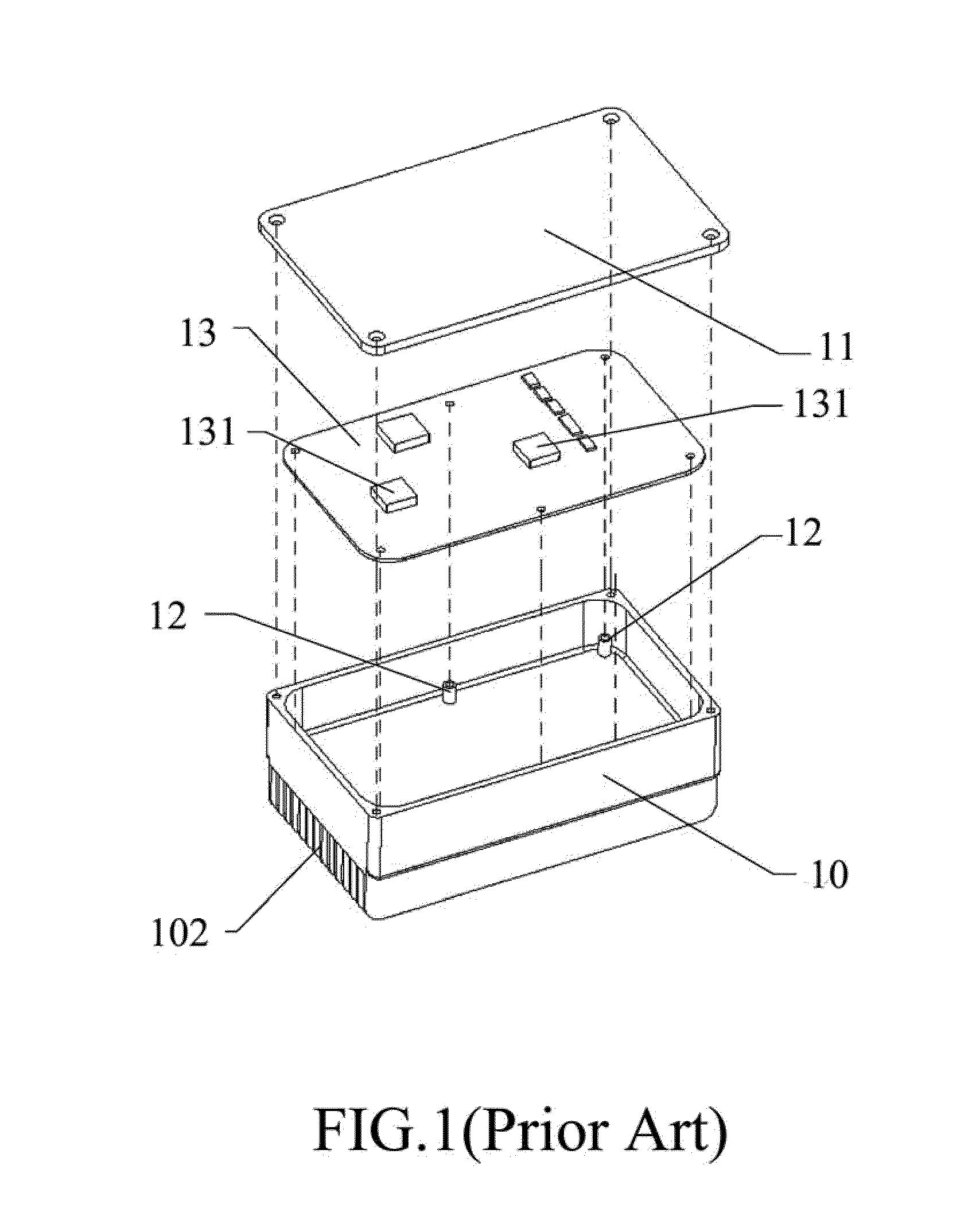Heat dissipating cavity
a heat dissipating cavity and cavity technology, applied in lighting and heating apparatus, semiconductor devices, semiconductor/solid-state device details, etc., can solve the problems of increasing the temperature, the temperature of electronic parts exceeding the tolerance limit, and the material used usually has low thermal conductivity coefficient, so as to achieve the effect of efficient dissipation of hea
- Summary
- Abstract
- Description
- Claims
- Application Information
AI Technical Summary
Benefits of technology
Problems solved by technology
Method used
Image
Examples
Embodiment Construction
[0021]Several aspects of the invention are hereinafter described in detail with reference to FIGS. 2 to 4.
[0022]Referring to FIG. 2, the present invention is a heat dissipating cavity. The preferred embodiment includes a cavity 2, temperature equalizing elements (an L-shape heat pipe 301, a straight heat pipe 302, and a heat expansion plate 4 are employed in the preferred embodiment), a copper plate 5, high thermal conductive pads 601 and 602, and a cover 7. On the outside of the cavity is disposed a plurality of heat dissipating fins 201. On the inner base of the cavity 2 are disposed a heat pipe groove 202 and a heat expansion plate groove 203. The cavity 2 of the present invention is designed for the electronic board 8, whereon are disposed heating elements 801 and 802.
[0023]In the preferred embodiment of the invention, the L-shape heat pipe 301 and the straight heat pipe 302 can be adhered to the copper plate 5 by welding, heat conductive glue, or screws before being disposed in...
PUM
 Login to View More
Login to View More Abstract
Description
Claims
Application Information
 Login to View More
Login to View More - R&D
- Intellectual Property
- Life Sciences
- Materials
- Tech Scout
- Unparalleled Data Quality
- Higher Quality Content
- 60% Fewer Hallucinations
Browse by: Latest US Patents, China's latest patents, Technical Efficacy Thesaurus, Application Domain, Technology Topic, Popular Technical Reports.
© 2025 PatSnap. All rights reserved.Legal|Privacy policy|Modern Slavery Act Transparency Statement|Sitemap|About US| Contact US: help@patsnap.com



